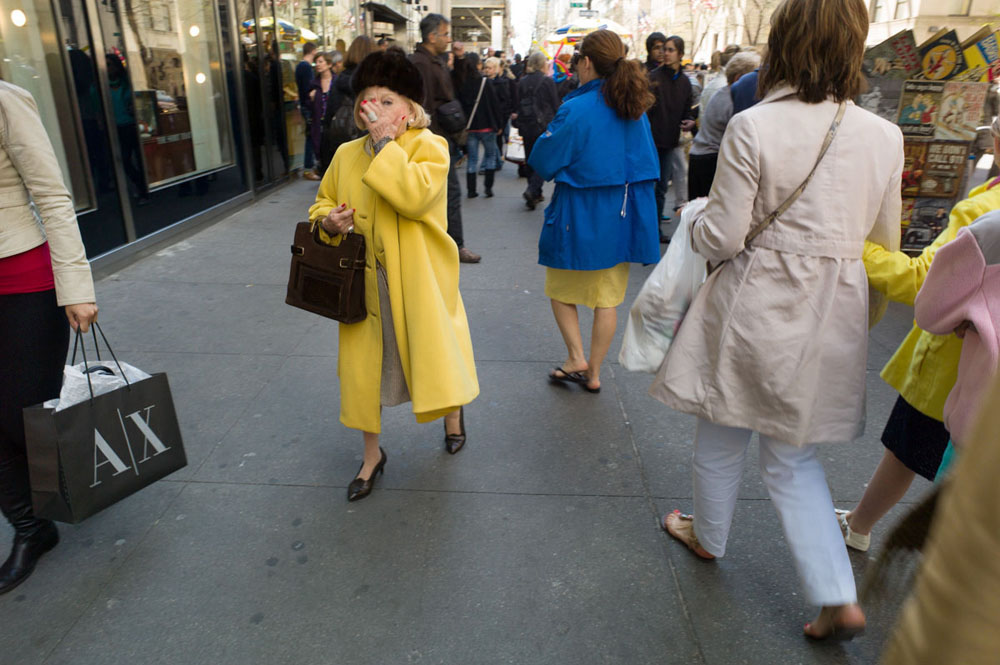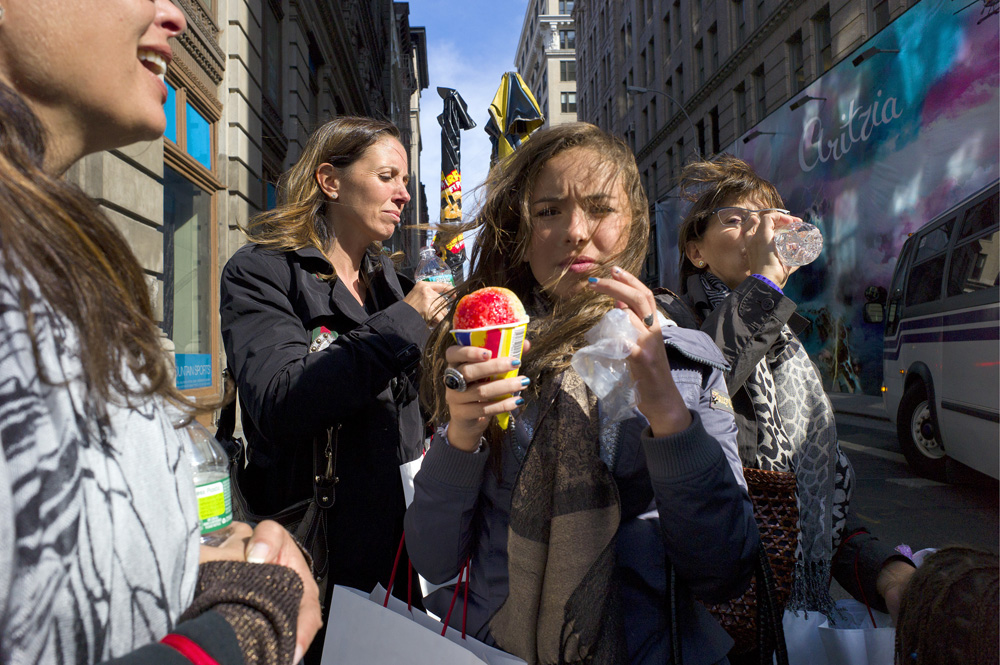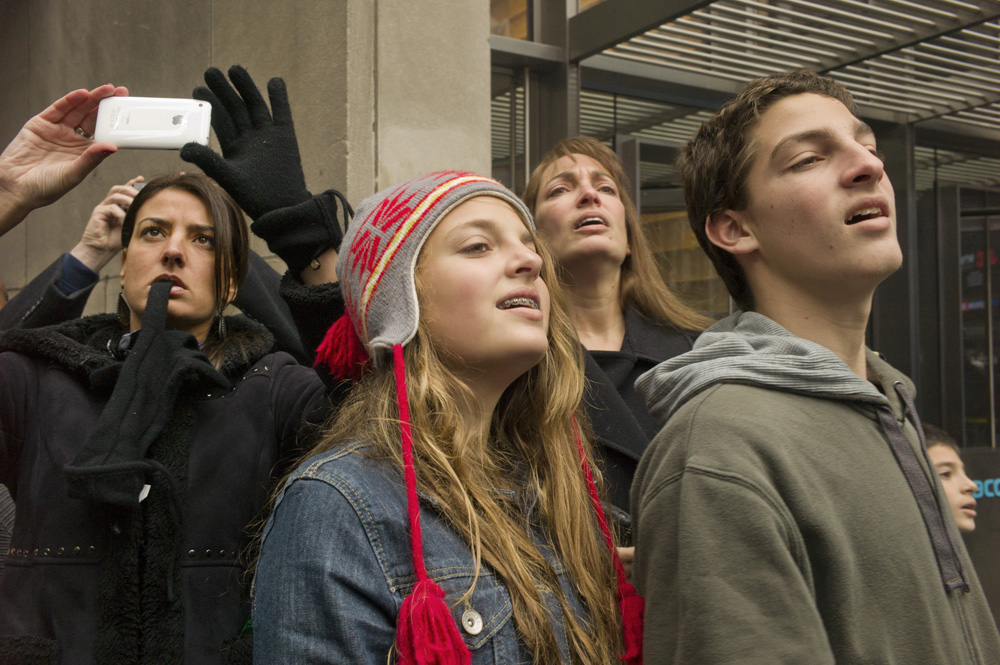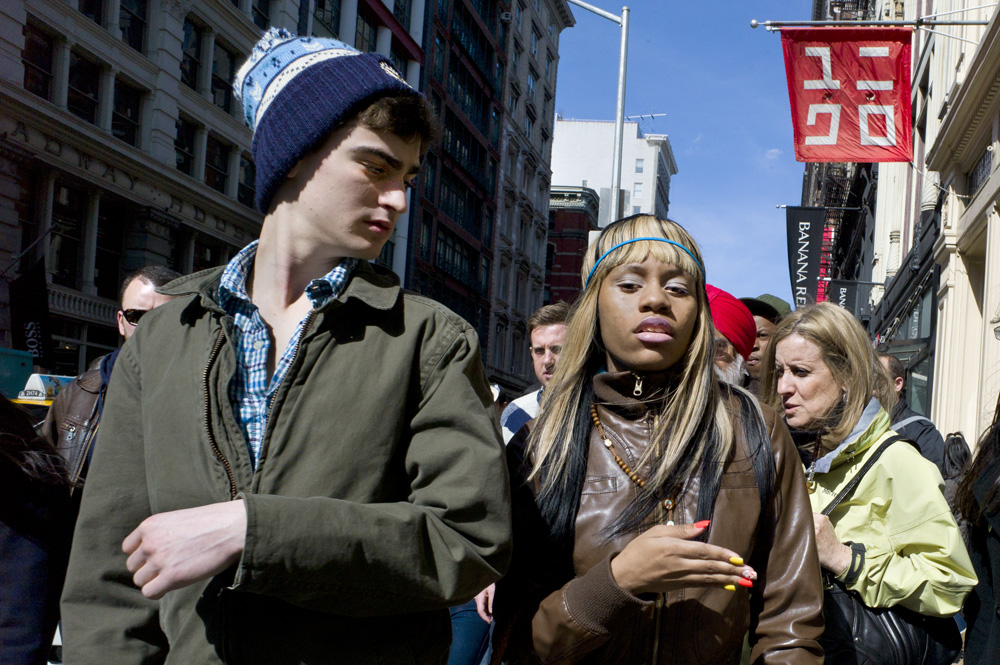Richard Bram was born in Philadelphia, PA and attended Arizona State University where he received a Bachelor of Science in Political Science. He started off with a career in business, but gave that up to pursue photography full-time as a profession. His works have been seen in exhibitions around the world and numerous publications. He is a member of the street photography collective iN-PUBLIC.
Q: Hi Richard. In another interview you said that photography was not a big priority while you were growing up. At what point of your life did photography become something that you cannot give up?
A: The beginning of 1984 was the end of the ‘regular job’ phase of my life. I’d always taken pictures as an avid hobby snap shooter and my interest grew through the different phases of my business career. I enjoyed it more and more and began to get some positive feedback on my pictures – ‘great photo – you should do this seriously’ sorts of comments. One evening at a party, I told a friend who’d run a fine art photography school in Louisville that I was thinking of becoming a photographer. His advice: “Don’t do it! You shouldn’t be a photographer unless there is nothing else you can do.” He was right. I am simply unable to do anything else, and I’ve never looked back.
So at the tender age of 32, armed with ignorance and courage, I went forth and proceeded to truly starve for a couple of years as I began to build a practice in public relations and public event work. I realized how little I knew so went to the library and devoured everything I could get my hands on about photography. I especially looked at photographers’ monographs, deciding whom and what I really liked. It wasn’t easy; I was only a talented amateur with the art but not the craft. But some wonderful people believed in me and I had a few breaks early on. At the same time, I inherited from a distant relative an old but solid enlarger and other darkroom gear. It was a sign: For the first time I was prepared when Chance favored me, something I had never experienced.
Q: How would you describe your style?
A: My style has evolved and grown over time, although certain core ideas run through my work. Humor, compassion, empathy along with a formal sense of composition comes through while I’m in search of the unusual in the everyday. When I started out, I was working almost exclusively in black and white. I naturally fell into what could be thought of as a ‘classic’ style: emulating Kertesz, Cartier-Bresson, and Eisenstaedt; that is to say beautiful, romantic, poetic. I had studied a lot of Art History at university. This helped me internalize a sense of formal composition that is crucial to my style, even when a photo seems completely informal.
I was making a living in the public relations world and concentrating on people; more and more I began to see and then photograph the quirkier moments in the events I was covering. Those photographs were the beginning of the edgier street photographs. I’ve always gone back and forth between these two viewpoints and see no problem with that.
Public relations taught me to be aware of two things: A) The background of a photograph, because corporate sponsors want to see their logos in the events that I was hired to document; and B) the Significant Gesture, something to animate a photograph of someone making a speech or giving a press conference. My earlier street photography style often emphasized the first, carefully juxtaposing foreground and background for visual or humorous effect. The pictures I’ve been making in the last few years are more concerned with gesture, whether it is explicit or implied, which can give a photo interest and gravity. Also, I’m beginning to look at more complex composition when editing the photos.
Q: You are member of iN-PUBLiC. I must observe that while the collective is still an important point of reference for the Street Photography, it is really static. I wonder if currently it is still the best available Street Photography collective for you.
A: When iN-PUBLiC was founded in 2000 by Nick Turpin in London, there were no other sites or collectives dedicated to serious street work; now there are many that have followed us. To me, the 21 members of iN-PUBLiC represent the gold standard of the world’s contemporary street photography. One thing iN-PUBLiC stresses above all else is being a ruthless editor of one’s own work. This is the most crucial aspect of our work as a group. We continually and mercilessly – but with respect – critique each other, pushing each other to work outside our comfort zones as our personal styles evolve. If you want to find examples of work on the highest level without resorting to tricks and gimmicks, it is still the first place to go. It’s an honor to be among this group of serious, dedicated, street photographers.
Q: Leica has been your ‘weapon of choice’ for your personal work for 25 years now, and the acquisition of the M9 in 2010 pushed you and your work into the radical shift from black and white heavily into color. Do you think, then, that a camera, while being a tool, can influence the way you work and approach to photography?
A: Whatever camera you have in your hands will influence the way you shoot if only due to the mechanical and technical qualities, even the limitations that the camera has. I’ve shot with all sorts of cameras and what I choose to take with any of them will partly be determined by the way they work. The M9 was the first digital camera I’ve owned that has allowed me to comfortably shoot color on the street in the same way that I’ve always shot black and white with my other Leicas.
Q: Why Leica? Why are these cameras so special?
A: The first camera that I ever made a lot of pictures with was my mother’s Yashica rangefinder. I took it to Europe with me in 1973, the first time I ever shot what seemed to me like a lot of photographs in one go. I got used to working with the rangefinder focusing pretty quickly and liked it. Years later, I was doing a lot of work with the Louisville Orchestra using my workhorse SLR, which had a very distinct, loud and conspicuous shutter clack. A friend told me I needed to get a Leica because it had the quietest shutter. Shortly thereafter in early 1988 I found my first Leica, a much-worn 1955 M3 that I still love and use. From the first moment I picked it up, it felt familiar in my hand and quickly became the favorite instrument for my personal work. If I wish to be inconspicuous and quiet, working fast and close without much notice, I use a Leica M.
Q: What Leicas have you used so far? And what Leica you would to try?
A: As I mentioned above, my first Leica was an M3. I’ve used other Leica rangefinders as well: an M5 (sadly lost in the back of a London black cab one night), M6s and now the M9. They are all almost completely manual cameras, reliable and solid. I have also used my wife’s original Leica D-Lux, a beautiful little camera, which was my first tentative foray into digital photography while I was still completely immersed in the film world.
I recently played with the M Monochrom at PhotoExpo here in New York and found it intriguing. I’ve never been fond of converting color to b&w, preferring the tonal rendition given by film to converted digital color, no matter what software tricks are used. However, it is so easy – for now at least – just to pop a roll of film into my M6 that it more a luxury than a necessity at this point.
Q: Do you have any ideas for Leica?
A: I’d like to see an updated re-issue of that original 2003 Leica D-Lux with an improved sensor, software and battery. To my eye, it’s still the most beautiful pocket digital Leica have made.
Q: What is photography for you?
A: I am a photographer. It is my life, my purpose, the way I define myself and my place in the world.
Q: Can I ask you if there is a project that you loved most in all these years? And do you have any new projects?
A: One that I have loved most? No, but there are favorites. The new work I’m making on the streets of New York, the London Underground and SoHo, the older “Big Hair & True Love,” and “Spectators” from my Kentucky days, and some of my travel work in Russia and Mexico come to mind. They all represent a photographic summing up of a particular phase of my life.
One body of work we haven’t discussed is my continuing work with musicians. As I hinted at above, this may be responsible more than anything else for my attraction to the Leica M-System in the first place. I’ve always loved classical music and working with orchestras and chamber musicians has been a joy rather than a task. I still work closely with the violinist Peter Sheppard Skaerved, the Kreutzer Quartet and other musicians and composers in England. The privilege of hearing the exquisite music both old and very new that they make is one of my great pleasures in life. Working with my friends for many years now means that I can shoot close enough to hear the wood as they play and not be a distraction or in the way of a bow.
Currently, I’m editing the color work I’ve made here in New York over the last few years, and will soon do the same with the London work. In my head I have a project combining the two, as my life has combined living in both cities. Stay tuned.
Q: Sometimes you give workshops. Do you want to talk about this experience? For me it is always an interchange between trainer and students, an opportunity to grow up. What do you think?
A: The experience of explaining your own work and practice to someone else forces you to think hard about what you do and why you do it. In the workshops I’ve given in the past year, I’ve learned that if you ask a question of my students, you’d better have an answer from yourself as well. They have taught me a lot.
Q: OK, we have come to the end of the interview. Would you like share with our readers a wish for 2013?
A: I would wish that we all make strong pictures, interesting pictures, photographs that show us things we haven’t seen before and have a great time doing it. Good shooting and good luck!
Thank you for your time. Richard!
– Leica Internet Team
Learn more about Richard on his website.
Alex Coghe , the interviewer, is an Italian photojournalist currently based in Mexico City whose professional activity ranges from editorial photography to events.





Comments (3)